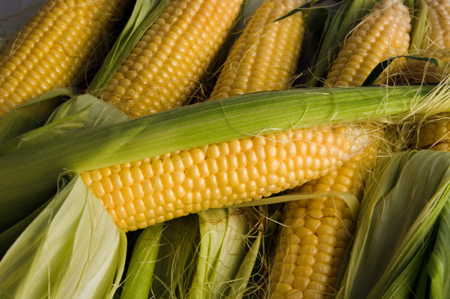 (Reuters) – U.S. corn export sales have outpaced last year as steady buying by Mexico helped to offset sluggish early-season purchases by traditional Asian customers like South Korea and Japan.
(Reuters) – U.S. corn export sales have outpaced last year as steady buying by Mexico helped to offset sluggish early-season purchases by traditional Asian customers like South Korea and Japan.
Now, Mexico is primed to overtake Japan as the single largest U.S. corn importer, knocking Tokyo from the perch it has occupied since the mid-1980s and taking the top spot for the first time ever.
The shift illustrates how the United States, once the world’s lone grain trading superpower, is now relying on its southern neighbor to absorb more of its ever-growing corn stockpile, analysts said, as rising suppliers like Ukraine and Brazil have disrupted global grain trade flows.
It is also the product of a multiyear commodities boom that began in 2007 which bolstered farming in South America and Eastern Europe and grain shipping investments by local governments and large grain traders such as Cargill Inc [CARG.UL] and Archer Daniels Midland Co.
At risk is the long-standing dominance of U.S. corn exports, valued at $8.3 billion last year and a crucial outlet for about a third of every U.S. corn crop.
“There’s been a shuffling of the top of the deck,” said Dan Basse, president of Chicago-based consultancy AgResource Co. “It’s a very competitive world out there.”
The change in export patterns highlights how quickly the fortunes in the farm economy can turn, and how little time companies have to respond to those changes, said traders. U.S. corn exports account for a 6.2-percent share of the agricultural products export total, according to the USDA.
Despite a three-month buying flurry, Japan remains on pace to buy its second-smallest U.S. corn volume since at least 1999, according to the most recent U.S. Department of Agriculture data. South Korea’s haul through mid-June is the second-lowest in a decade.
STALLING RALLY
But the recent rise in demand by Asia’s largest importers could soon stall, thanks in part to Brexit which has riled currency markets.
The U.S. dollar has rallied to a three-month high against a basket of currencies after Britain’s vote last week to split from the European Union, making dollar-denominated commodities costlier for those holding other currencies. Meanwhile, Brazilian and Argentine corn prices are easing as their late-season corn harvests accelerate.
“Buyers respond to price. If you’re not able to offer grain cheaper than the next guy, you’re not going to get that business,” said a U.S. corn exporter who asked not to be named.
When Asian buyers started shunning U.S. corn last fall, some of the largest American grain exporters and sellers scouted markets closer to home to offset the losses, said traders.
In particular, they turned to markets that industry-funded groups, such as the U.S. Grains Council, had been wooing for years and regularly hosted at U.S. grain elevators and farms.
Mexico, traders said, was an obvious place to pitch due to proximity and favorable trade status. For Colombia and Peru, free trade agreements also made buying corn from Brazil and Argentina less appealing than American grain.
UNCERTAIN FUTURE
Latin American demand for corn is rising with growing livestock and corn processing industries. But as U.S. farmers look to harvest another massive corn crop this fall, questions remain about whether these markets can absorb the surplus.
Mexico’s import appetite can vary significantly depending on the size of its own grain crop and the availability of alternative feed grains like sorghum, analysts cautioned.
The USDA’s attache in Mexico this month cut the country’s corn import outlook by 1 million tonnes, or 7.4 percent, from the official USDA forecast due to higher-than-previously-estimated domestic production.
And, globally, competition from South America is only going to grow.
Brazil’s agriculture minister last week proposed raising the minimum corn price, a move that could shift more of the country’s soybean area into corn production. Corn plantings in Argentina could jump 20 percent after changes to the country’s export policies.




